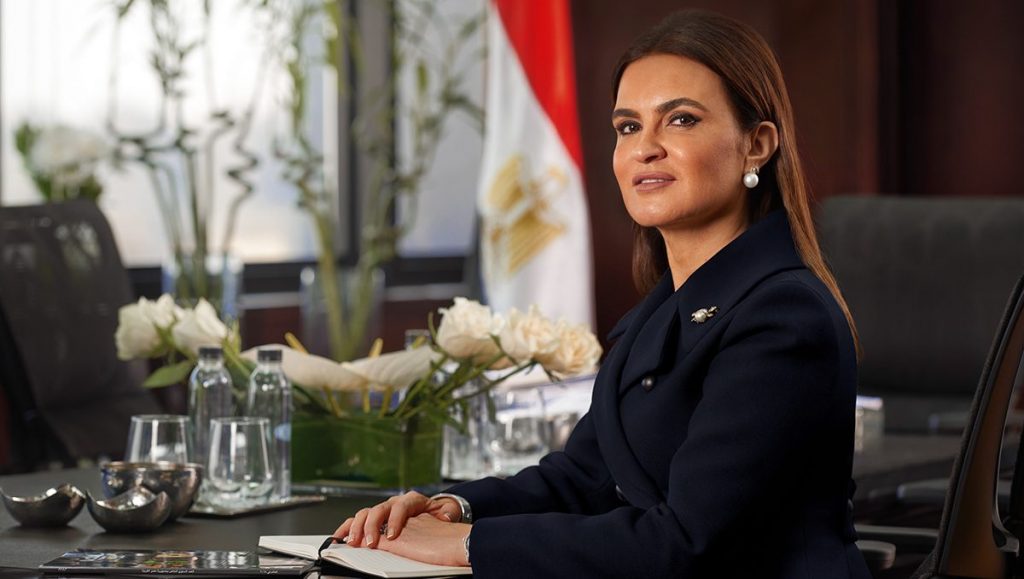Since the pandemic became a global threat in March, almost every expert has agreed the economic crisis brought about by COVID-19 will be unprecedented. A UNCTAD report published in November warns that even the recent news of a vaccine that is 90 percent effective in late-stage clinical trials “will not halt the spread of economic damage, which will be felt long into the future.”
However, the government and international institutions such as the World Bank and IMF are forecasting that Egypt’s GDP will grow this year. That has been in part thanks to fiscal and monetary policy decisions made throughout the year. According to many experts, the government’s proactive budgetary and economic moves effectively saved the economy from crumbling. In a July note, the IMF said ongoing reforms since 2016 helped the “government to swiftly launch a comprehensive pandemic response.”
Promising metrics
Except for a one-off blip in April’s economic metrics, Egypt’s government has stayed on the right side of promoting economic growth while keeping COVID-19 from spreading uncontrollably.
During the second quarter of 2020, GDP grew 5 percent compared to 5.6 percent in 2019. In October, a Reuters poll predicted economic growth would decline to 3.3 percent by the end of the year. According to the World Bank, IMF and European Bank for Reconstruction and Development, Egypt is the only country in the MENA region that will witness GDP expansion in 2020. “The downturn in GDP [growth rate] is projected to soften in the first half of FY 2020/21, before growth returns in the second half,” said a Focus Economics consensus forecast in November. “A recovering external environment should aid the improvement, as key international markets reopen following stringent lockdowns.”
In October, the government announced that income before paying debt obligations (primary surplus) reached EGP 100 million during the first quarter of the FY 2020/2021. In a letter to the IMF, the government projected a primary surplus of 1.4 percent of GDP by year’s end. The pre-COVID-19 forecast was 2 percent. Ahmed Kouchouk, vice minister of fiscal policies and institutional reform, told the media in October that retaining a primary surplus would help in “achieving economic targets.” Supporting that metric is low inflation of 4.6 percent as of October 2020 compared to 3.1 percent a year earlier and 17.67 in 2018.
“Maintaining policies to preserve the level of primary surplus in the budget and keeping inflation under control will help the economy grow faster,” Jihad Azour, director of the IMF Middle East and Central Asia Department, told Daily News Egypt in October.
Impact on business
On the ground, businesses have had a mixed year. According to CBE data, during the first nine months of 2020, exports hit a 10-year high. Meanwhile, the trade deficit balance improved to 5.4 percent due to a decline of 3.3 percent in imports and a 0.5 percent rise in exports. That came despite a 3 percent increase in the pound’s foreign exchange rate versus the dollar, according to the CBE.
Despite those relatively promising metrics, unemployment rose from 7.7 percent in the first quarter of 2020 to 9.6 percent in the second quarter — the highest unemployment rate since the third quarter of 2018. “Industries that downsized the most were transportation, storage, retail, food, hospitality and transformative industries,” said Hala Elsaid, minister of planning, in a September webinar. “About 70 percent of Egypt’s labor force works in five sectors, including agriculture, construction and retail.”
Pressure on businesses that rely on imports will likely increase as dollar inflows to Egypt have declined throughout the year. Tourism generated $12.57 billion in 2019, but the government projects a 73 percent decrease in 2020. Remittances may offset some of that loss with a 10.4 percent increase in FY 2019/2020. There is no government projection for remittances in FY 2020/2021.
Government support
To prevent its finances and the economy from deteriorating further, the government has focused on leading investments. In September, Prime Minister Mostafa Madbouly announced that during FY 2019/2020, government investments increased 26 percent year-on-year. This year, government investments could jump 55 percent compared to FY 2019/2020.
Such investments include infrastructure such as water and sewage networks in existing and new cities under construction. It also includes roads and bridges, according to figures issued by the Ministry of Transport.
Madbouly noted government stimulus to industries such as tourism pushed GDP to grow by 3.5 percent in FY 2019/2020. “Without government intervention, the economy would have only grown by 1.9 percent,” he told the media in September.
Elsaid, the planning minister, said in the webinar that the tourism and manufacturing sectors witnessed the highest decline in profits. However, real estate, agriculture, health, education and petrochemicals saw demand soar.
The government’s GDP growth rate projection until the end of 2020 is 3.5 percent compared to a pre-pandemic target of 5.8 percent. “The government’s strategy leans towards economic activity with precautions over full lockdown to stem the pandemic,” noted Elsaid.
The other step the government took was increasing its financing options offered to local and foreign investors, according to Finance Minister Mohamed Maait in September.
The minister announced $750 million was raised by issuing green bonds, making Egypt the first country in the MENA region to use such a tool. The issuance was oversubscribed, allowing the government to drop yields by 50 basis points to 5.25 percent.
Issuance proceeds will go into environmentally friendly projects such as transportation, renewable energy, and energy efficiency. “That money will either refinance existing projects or fund greenfield ones,” said Maait.
The government’s second step to diversify its financing options was announcing a new sukuk law and taking steps to use the sharia-compliant tool. In April, the Financial Regulatory Authority announced amendments to the draft law, which still needs Parliament’s approval. Maait hinted on several occasions that the Finance Ministry is working on amendments to the sovereign Sukuk regulations. The latest announcement was October when Maait said any sovereign Sukuk issuance’s underlying assets would be state-owned companies, not projects.
That strategy has so far benefited the private sector. Talaat Moustafa Group (TMG) was the first to issue Sukuk in Egypt. In April, it raised EGP 2 billion, paid over 57 months. Investors can trade those sharia-compliant tools on the EGX until maturity. That compares with TMG’s initial plans to issue EGP 4 billion to EGP 4.5 billion Sukuk paid over 36 months. The underlying asset is the developer’s open-air mall under construction in Madinaty. Three government-owned banks bought 97.25 percent of the issuance.
In November, investment firm Sarwa Capital said it would issue EGP 2.5 billion in Sukuk for contract financing before the end of 2020. It will be a private placement bid for financial institutions and high-net-worth individuals. Its maximum tenure would be 84 months, said a company release. The Financial Regulatory Authority approved Sarwa Capital’s submission in late November.
Using such tools to attract a new type of long-term investment will likely entice other local private sector firms to follow suit. Egypt’s Purchasing Managers’ Index grew in September and October, indicating a possible need for low-interest financing soon.
 CBE to the rescue
CBE to the rescue
The highlight of CBE decisions has been lowering interest rates from 12.25 percent to 9.25 percent in February and to 8.25 percent in November. It also canceled the 15 percent three-year deposit certificates offered by state-owned banks. The aim is to encourage spending, which has been low throughout 2020 with inflation under the CBE’s target range of 7 percent to 11 percent.
In November, experts speaking to Al Ahram noted that low interest rates are good for businesses and make new government debt less expensive. However, domestic treasury investors could shy away from new t-bill issuances. Experts also noted people are not spending because they are afraid of what the COVID-19 pandemic could mean for their financial obligations and income.
To support local businesses, the Central Bank announced 16 initiatives in the first six months of 2020 in preparation for the significant decline in economic activity caused by lockdowns and restrained spending.
Those decisions included removing bank fees on all transactions and postponing loan installment payments until September. The CBE also reduced interest rates in all its ongoing initiatives to align with reductions in overnight lending rates. It also removed clients from the “blacklist,” thereby allowing them to benefit from low-interest loans and apply for financing initiatives. It took similar decisions for individuals struggling to pay loan installments.
The bank also launched an initiative to help middle-income home seekers and another for the construction, manufacturing and agriculture sectors. Those two ended in September. The tourism initiative, which was launched in April and will continue to the end of the year, allows companies to take low-interest loans to finance their payrolls if they agree not to downsize.
A third set of initiatives focused on promoting e-payments and online transactions, which has long been a priority for the CBE. Since COVID-19 lockdowns started, those policies became more urgent.
Uncertain future
At press time, new COVID-19 cases numbered more than 400 a day compared to less than 150 a few weeks prior. Madbouly publicly expressed his concern in late November, telling the media, “Work must be done to avoid falling into a second wave.” The fear is that the second wave of COVID-19 could be more severe than the first, putting significant pressure on the state’s medical system, businesses whose employees would be more susceptible to getting sick, and individuals who would reign in spending.
So far, Mabdouly has refrained from closing down the economy or schools. “If we imitate the countries that applied the complete lockdown, we would be in a difficult economic situation,” he said, as reported by Arab News in November.
Meanwhile, the government and CBE are seeking support from the IMF and other bodies to prop up the economy. In November alone, the government announced it was negotiating a $1.6 billion loan from the IMF, in addition to an earlier $2.8 billion loan from the Fund secured in April. Also in November, the finance ministry extended its 2018 treasury bonds’ maturity from 4.5 years to 6 years. That gives the government more time to raise the necessary cash should investors decide not to purchase new bonds when the ones they hold reach maturity.
In October, the World Bank noted that Egypt cannot simply throw money at the problem of sustaining its economic recovery. “The multidimensional health and economic crisis caused by the pandemic underscores the importance of advancing both the human capital agenda and the country’s crucial need to strengthen social protection,” it said. “The second wave of pending reforms, designed to unleash private sector activity and address Egypt’s longstanding structural challenges, is crucial to create better employment opportunities and improve livelihoods.”







